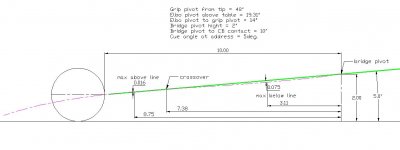Hate and pride are not good qualities for you to be embracing Rick. So sorry to hear you say that.I really thought you would come through after all your speeches about honesty, truthfulness, ect. I will admit I was wrong about you, it's not about the truth for you at all. You have now made it very clear to me that you can't stand the truth and won't waste your time with it. So sad.
You know something, Neil? I would welcome an apology from Rick, based on the fact that no longer can he "hide" behind the excuse that "everyone is being evasive, and not providing the concrete answer he is looking for."
There's something to be said, when in the company of studied professionals (i.e. instructors) -- and you've heard this expression before -- of a "reader / student exercise" -- where the onus is on the STUDENT (or reader) to seek the proof that has long been out there. It's not up to the instructor to "solve for the variable 'x'" but rather the STUDENT to do so. It's not up to the instructor to do the student's homework assignment for him/her.
In this case, it was up to Rick to go do the research, read up on the pendulum stroke, go find those videos, and just in general "come to terms with what you perceive as the 'enemy' of your own common sense." That enemy exists for a reason, and if it "offends" your own reasoning, it's up to you -- not anyone else -- to go find it, come to terms with it, etc.
In Rick's case, everything is
"you guys go dig that stuff up, and send it hither. I know you say the proof is out there, but I want you guys to do the research and spoonfeed me. Send it hither, and I'll decide what I want to read and what I don't want to. And if it's too much to read or reference, or if I don't like the packaging [read: you haven't put enough sugar on top for me], I'll just hit you with 50 questions to keep you busy."
When presented with overwhelming proof, heck, I've been known on these boards to take a step back, and go, "you know guys, I've been wrong about this -- it doesn't make sense to me, but you know what? I'm going to sit down with this stuff, digest it, come to terms with it, and reintegrate it into my knowledge base. Kudos to so-and-so for showing me where I was going awry."
It's not a question of "where one stands in relation to that old question of whether the world is flat" or not. This is not Galileo's or Copernicus's time at the start of the science of astronomy. This is the 21st century -- science has advanced a LOT since then, and we have cameras and high-speed video proof. In fact, science has
changed the thinking of people as a whole to "break things down and let's see how they work" -- not believe in something because someone told us so. Example, go to any science class in today's schools, and what are they doing? Experiments and proofs. Go read up about science classes back in the "flat earth society" days, and what do you see? Students being
told how things are based on drawings and text in books. Big difference. The whole methodology to learning has changed since the days of the "flat earth" society, and that analogy is no longer applicable nor appropriate to trivial discussions of the travel of the cue during a pendulum stroke. Video and "experimental device" evidence SOUNDLY prove that stuff.
Anyway, I just wanted to append on what Neil wrote, because I also agree, it's very unhealthy to retreat into a corner, and hold vendettas because that bone of information that one is clenching hard between the teeth (and refuses to let go), is actually not correct at all. It's also very inappropriate to place the blame at RandyG's or Bob Jewett's feet for presenting information where the onus was on *Rick* to understand what the information is, where it came from (and the context of how/why it was used or offered), come to terms with it, find out why it "seemingly" conflicts with something else, etc.
-Sean




